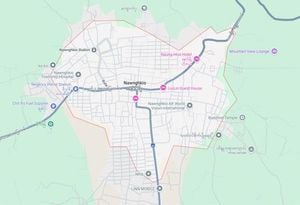On May 1, 2025, Mexico will celebrate Labor Day, a date established as a mandatory rest day according to the Federal Labor Law (LFT). This day honors the historical struggle of workers for better working conditions, originating from the events in Chicago in 1886, where thousands demonstrated for an eight-hour workday. These protests culminated in a violent crackdown known as the Haymarket Riot, which became a symbol of resistance and unity for the international labor movement.
In Mexico, this celebration also recalls local struggles such as the Cananea strike of 1906 and the Río Blanco strike of 1907, which were pivotal in the emergence of the labor movement in the country. Since 1913, May 1 has been officially recognized as Labor Day, marked by marches, demonstrations, and commemorative events primarily organized by unions and workers to defend labor rights and make their demands visible.
Every year, workers gather in various cities, particularly in Mexico City, where they converge at the Zócalo, carrying banners and flags to express their unity and demand improvements in working conditions. This year, the march is expected to attract at least 12 contingents, including members from the National Polytechnic Institute, the National Coordinator of Educational Workers (CNTE), and the National Autonomous University of Mexico (UNAM), among others.
As part of the celebrations, the streets around the Zócalo will be affected, with several roads closed to accommodate the marchers. Authorities have provided a list of streets that will be closed, including areas near the Ángel de la Independencia and the Palacio de Bellas Artes. Alternative routes have also been suggested, such as Avenida de los Insurgentes and Eje 1 Norte, to help mitigate traffic disruptions.
Labor Day is not just a day off; it serves as a reminder of the ongoing struggles for fair labor practices. The first commemoration in Mexico took place in 1913, when thousands of workers protested for the eight-hour workday before then-President Victoriano Huerta. Over the years, the demands of workers have led to significant labor reforms, including the establishment of the maximum working day and protections for young workers and pregnant women.
The official recognition of Labor Day in Mexico came in 1923, making it a mandatory day of rest, and since then, it has been a day for reflection and protest rather than mere celebration. The day is also an opportunity for workers to voice their ongoing demands for better conditions, including fair wages, job security, and the right to unionize.
Interestingly, while May 1 is a national holiday, the following day, May 5, which commemorates the Battle of Puebla, is not officially recognized as a day off according to the Federal Labor Law. This battle, fought in 1862, marked a significant victory for the Mexican army against French forces and is celebrated with parades and ceremonies, particularly in the state of Puebla.
Despite its importance, May 5 is not a mandatory rest day, meaning that it will be a regular working day across the country unless specified otherwise by public or private institutions. This year, many are speculating about whether banks will operate on May 5, and the National Banking and Securities Commission (CNBV) has confirmed that regular activities will continue, with no closures expected.
On Labor Day, while many workers will enjoy a day off, those who work on mandatory rest days are entitled to double pay as stipulated in Article 75 of the LFT. This law ensures that workers are compensated fairly for their labor, reflecting the ongoing commitment to improving labor rights in Mexico.
In addition to the marches and demonstrations, social media has also become a platform for workers to express their sentiments through humor and memes related to Labor Day. These often highlight the irony of celebrating work by taking a day off, using popular images and viral templates to connect with a wider audience.
As the day unfolds, it will not only be a time for workers to gather and march but also a moment to reflect on the achievements made in labor rights and the work that still needs to be done. The legacy of the struggles fought by earlier generations of workers continues to resonate, reminding all of the importance of unity and solidarity in the face of ongoing challenges.
In summary, Labor Day in Mexico serves as a powerful reminder of the historical and ongoing fight for workers' rights. It is a day dedicated to honoring those who have fought for better conditions and to advocating for the rights of current and future generations of workers. As the marches take place and voices are raised in unison, the spirit of solidarity remains strong, underscoring the significance of this important day.





